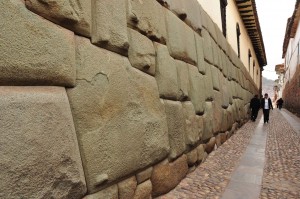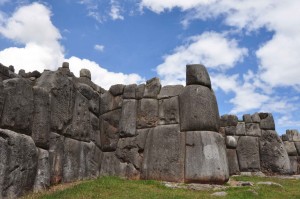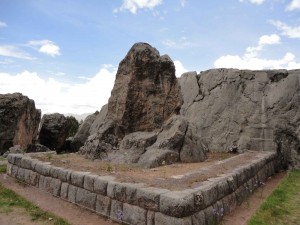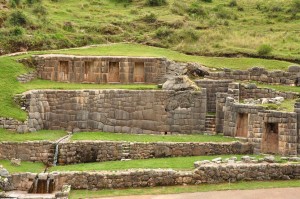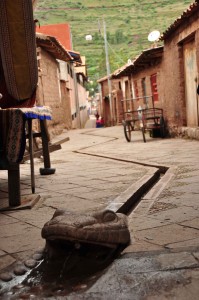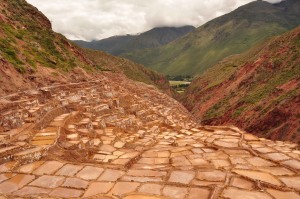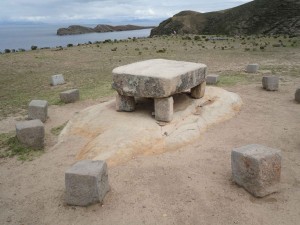We had originally planned on several weeks exploring Bolivia’s fantastic landscapes, but the universe had intervened and we had been forced to reduce things to their basic essentials. Bolivia was not to be taken lightly though – it had loomed large in Megumi’s plans for most of the trip – two of her big travel “to do’s” were located here; accessible mountains above 6,000m and the salt lake’s of Uyuni – scenes from which had been haunting her desktop wallpaper for the last 2+ years, above all other locations, which says a lot.
Our entry to Bolivia from Peru, came via the stunning Lake Titicaca – one of the earth’s truly sacred place’s. The largest, high altitude lake in the world, some 4,000m, it is home to the creation myths of the Inca’s and several more great ancient civilizations, most notably the Tiwanaku dating back to almost 3,000 BC. Arriving in Copacabana we stayed the night and caught a boat to the Isle del Sol (Island of the Sun) the next morning. Getting dropped off at the Northern end – we visited the sacred Incan creation stone and ceremonial centre, then trekked the length of the island, down an old Incan trail for 3 hours staying at one of the many hostals at the other end, all of which are kitted with wonderful views across the lake. Titicaca itself is an incredibly tranquil place, oozing with silence and memories of times past. Becalmed on the surface and ringed by snow capped peaks on its distant shores, it is an easy place to idle away days of time. Peninsula’s and islands jut out in different directions, many of which are in the distinct shape of animals – most notably serpents and puma’s. You can easily see why the place is so revered in the Andean cultures, it is very special.
Boating back to Copacabana, we caught a bus the few hours to La Paz and settled ourselves into a hotel in the middle of the downtown tourist area, comfortably positioned amongst all the trekking companies, souvenir stands and fellow adventurers, whereupon Megumi began making enquiries about mountain climbing. Having picked up a bit of a cold already and remaining still scarred by my Killamanjaro efforts similarly encumbered, I had decided to sit this one out. Megumi, despite sniffling away herself was pretty unperturbed though – she sat through heart monitors, oxygen analysis tests and defied any of the “trying to be helpful” trekking companies or guides to tell her what she could or could not do.
The mountain she wanted to climb, Huayna Potosi is about 6,088m, located just outside the city and consequently one of the most accessible (and cheapest) 6+k mountains in the world to climb. Largely because La Paz is already located at 4,000m so the net gain in altitude and risks of serious altitude sickness are somewhat reduced. It is still a really tough climb though, 9 hours for the total ascent over 2 gruelling days with little oxygen, some parts of which requiring crampons and ice axes to get over the top of ice walls, plus at least a week at this kind of high altitude to acclimatize beforehand. Having spent almost 2 months in Peru at similar heights though – we were pretty used to this atmosphere level now and Megumi locked herself in with a good company, geared up and disappeared for three days. Leaving me weirdly alone to recover from the flu and wander the streets of La Paz solo.
La Paz is a strange city, as you enter from the flat high alto plains, you are completely nonplussed at the fuss – the outer suburbs are all flat, poor and made from tan, mud, adobe bricks, its all rather bleak looking and featureless, until that is, you round a bend and see the centre of the city plunging steeply down into a valley – the red-roofed houses clinging to the high valley walls in all directions, yet surrounded by snow capped mountains on one side and strange, cream moon like landscapes on the other. Its breath-taking, Quito in Ecuador and Cusco in Peru are somewhat similar in style to this I guess, but none have the some impact.
The other big notable thing about La Paz is that the place seems to constantly be in a state of social unrest. The socialist, reformist President has done some amazing things here I think, recently giving Nature the same legal rights and status as humans which I think is absolutely fantastic and a model for the rest of the world, but he still has a lot of work to do. Every day we were there, protests shut down large parts of the city – constant fireworks and bangers were going off in all directions among the marching masses at all times of the day and seemed permanently in the background. At night, these continued and were coupled with some huge explosions, that I later learnt where actually protesters dynamiting roads in and out of the city. The protests I was living in the middle of seemed to be all about pay rises for the rural education sector and had been going on for 2 weeks or so. Several times I walked out into the city for an explore and found myself in the middle of thousands of marching protestors waving red banners of identification and demands and blasting off fireworks, while heavily armed riot police looked on from side streets.
Somehow around all this though, the city just carries on heedless, this is all obviously normal. Later we took a day tour to the great archaeological site ruins of Tiwanaku, an hour or 2 out of La Paz, ancestors of the Incas and the longest running ancient civilization in South America. The site itself was largely decimated and buried, but still features some fantastic architecture. Getting there was the adventure though – despite the roads being dynamited and the city exits closed down, the tour bus still found its way along weird city, dirt back roads (many of which were dead ends), until it found a way through – pretending the whole way, as though nothing here was slightly unusual.
We had heard lots of stories about La Paz, travelers getting mugged, stranglers that choke you til you loose consciousness then take your possessions etc, but by day the place seems reasonably safe by South American standards, of all the places we went, Quito in Ecuador was probably the most intimidating. At night though, it’s a bit different – wandering around by myself I was constantly harangued by dodgy characters trying to flog cocaine and other darker entertainments. As a result, I didn’t tast the nightlife much and mostly stayed in, using the time to catch up on some long overdue blogging.
I had originally intended to do a tour of a cocaine factory come jail, made famous by the book “Marching Powder”. The jail is located right on a major square in the middle of the city; inmates come and go largely as they please, wealthy inmates living like kings, while the poorer ones work the factory – its a full cocaine production facility, as corrupt as an institution gets, but one that is easy enough to get into to have a look at apparently. At least it sounded like a fascinating experience – then of course, I bumped into a Swede who having found a guide who would take him through the place, arrived at the jail just as a riot broke out and the police started bombing the place with tear gas, (Including the school next door). He said he had had to run 4 blocks following the kids in uniform, before he was able to escape the gas and stop himself crying. On the back of that information, no-one seemed to be offering tours and given the protest situation I decided to give it a miss.
La Paz is also very cheap and laden with authentic handicrafts from the regional populations and nearby Peru. Its probably the best place to pick up souvenirs in South America. The streets around Sagarnaga throng with traditional textiles, alpaca clothing, musical instruments and other souvenirs. There is also a witches market with hundreds of stalls lining either side of an adjacent street, stalls sell Llama fetuses (To be buried at your house for good luck), effigies, coca leaves and other customized preparations of despacho (Ritual offerings) items, (ie miniature food, money etc). The price of it all makes it an easy place to kill time and shop, including some great western restaurants – a welcome dive back into familiar foods at reasonable rates. For these reasons, I should also mention that it is a major hub for young Israeli travellers, (as was Cusco). They are camped out here everywhere here, all on extended world sabbaticals post military service.
When Megumi returned from her trek, she was jubilant but strangely silent. Totally exhausted, she had lost her voice, her face was windburn’t and she was burdened with a dreadful cough. Of the 7 in her team, only 3 had made it to the top, one of whom was a professional climber from Canada. Loving the experience though, she had somehow single mindedly forced herself up the ice to the top with her Japanese flag, despite her cold and general condition. She spent a day or two recovering, shopping a little ( Finally allowing ourselves to buy some souvenirs) and then started making plans to get down to Uyuni, the great Salt Lakes. Timings of which were kind of up in the air and subjective to the state of the protests and road blocks taking place, you should be ok to get out, we were nonchalantly informed. We stumped for the luxury bus, thinking that might improve our chances, and made ready.
As luck would have it though, our “luxury bus” managed to get away no problems and we slept the night away cruising in the dark past more stunning mountains and dramatic countryside – Bolivia is really a stunning place nature wise. Waking up in the morning though, we found ourselves marooned in the middle of a high altitude desert plain and strangely immobile. The bus it seems had broken down sometime earlier in the morning, the optimistic guys running the service, thought they could probably fix it, as you do, and as it turned out had delayed calling for a replacement. So we were now stranded and needed to wait another 4 hours or so for a new bus to come. Somehow they egged another 15 km or so out of the smoking engine for about an hour and parked us in the middle of a small town, Huari, where a local market was happening.
This at least allowed us to eat and get some shade from the high altitude sun while we waited, plus gave us the chance to bond with lots of fellow travels over the adversity. Everyone was in various states of distress over the incident – levels of which mostly revealed the acute traits of their respective nationalities – many were now missing their pre-paid Uyuni tours, causing havoc with tight travel agendas and seemed somehow surprised & shocked by the nuances of Bolivian transport. We quickly found a fellow Aussie and a Brit of better humour than the many Germans and Latino’s, to trade tales and pass the time with. Early afternoon, an old replacement bus arrived and we shuffled on and renewed our trip – only to cross a semi-flooded river road and have this bus breakdown severely overheating. With little likelihood of a second replacement coming, the seriously teenage driver and crew got busy under the bus and somehow fixed the thing after an hour or so and got us going again (minus some radiator hose). We ultimately got into Uyuni at about 4pm, 9 hours late and 6 hours after most of the buses occupant’s tours had started. It felt all part of the Bolivian experience really, but we have had much worse. While the bus company decided to shout us all lunch as compensation, a small riot ensued as some enraged fellow passengers optimistically tried to demand more significant compensation for lost tours, an effort which resulted in the police being called by concerned locals on the side of the drivers. Bolivia is constantly entertaining.
Uyuni the town is really a nothing much place, simply a launching pad for the adjacent huge Salt Lake and surrounding tour companies – flat as a tack, the lake itself is famous on traveller circuits for its unique visual distortions and landscape, allowing for great photography both the serious and the fun. Normally people do a 3 day tour that takes in the salt lake during the day, then heads further South to explore other lakes, deserts and mountain formations, some even continuing onto San Pedro in Chile. While we had initially been keen on that too originally, the bus travails meant that we had already lost a day and in the interest of giving ourselves some downtime in Buenos Aires before departure we reduced scale – really we wanted to spend as much time on the lake as we could anyway. With a pretty firm idea of what we wanted, we tried to find away around the standard packages and get a 2 day tour that allowed us to spend the night on the lake itself and give us the chance to take in the sunset / night sky effects and reflections on the mirror like surface of the lake – thanks to the thin watery deposits of the rainy season, a unique time to be here.
After checking out maybe a dozen travel companies, many of which wouldn’t consider 2 day tours, given that the rain had actually cut-off many of the standard destinations (The volcano and fish island) and there were no other takers. We eventually found someone that would drop us off at a Salt Hotel in the middle of the lake, for the night and then pick us up the next day. Really it was a 1 day tour program, but spread over 2 days. Good enough for us really – Megumi’s priority was photography on the lake, the rest was mostly a distraction. She had been planning and researching this for years and really seemed to know what she was doing. I was just a co-pilot on this one, mostly there to pay the bills.
Next day, we climbed aboard a 4wd about 10.30am with 5 other folk and set out on our tour. This started with an old train cemetery out of town, full of old steam engines – dumped, rusting and pretty much covered in graffiti. It was probably once a great site, evoking memories of “Butch Cassidy & the Sundance Kid”, which was all shot out here. But the place is covered largely in rubbish now (plus tourists) and most of the other backpackers on the dozens of other tours stopping here as well, had probably never even seen the movie. Next stop was an equally underwhelming visit to a village on the fringe of the lake, which bases their entire living on mining salt from the lake itself. Each house had a pile of salt out the back and a souvenir stand out the front, they did seem to be much more focused on fleecing tourists than packing salt in my opinion – one 8 year old kid after giving us a 2 minute, “this is how we bag salt” demonstration, then blocked the door out of his workshop and demanded cash payments.
Finally we were on the salt plain – fresh from summer rains, the 4WD’s of all the tour companies had to drive across 10cm of surface water on the lake for about half an hour, working our respective ways across the white, blue expanse to the salt mines and centre of the lake itself. Salt is scraped out of the water here into innumerable pyramid shaped piles in order to dry out. The locals then load these salt stacks into antiquated trucks using shovels, hauling the loads back into town for further refining and bagging. It’s an amazing site watching the work in progress, the quantity of salt here is enough to keep the world going for centuries, no matter how generous Maca’s are on their fries you figure. The salt just chunks up in crystals everywhere you walk and must be several metres thick. The place has the feeling of the arctic, a flat expanse of snow everywhere were you not better informed, it constantly catches you out.
After that, the 4WD tours, all head to the Salt hotel, a somewhat dry oasis in the middle of the lake and the only toilet for an hours’ drive at least in most directions. There are a good 50 tour groups there when we arrived, all happily picnicking out of the back of the 4WD’s. Most are on 3 or 4 day tours, either private VIP’s or backpacker groups thrown together; from all corners of the world it makes great people watching. Everyone running around trying to take stunt photographs utilizing the visual distortions or just playing in the salt.
We checked into the hotel, then hung around for a while chatting to other people we knew and waiting for everyone to leave so that we could finally get a photo to ourselves. By about 4pm the place was vacant just a myriad of murky, 4WD trails leading off in every direction across the salt flats. As the only people actually staying at the hotel it was a surreal experience, given the several hundred people that had been milling around the place all day. We waited for the wind to die down, stilling the waters a bit and then wandered far out into the salt / water empty expanses that seemed to surround the hotel to the horizon, enabling us to capture reflections in beautiful isolation. We managed to immerse ourselves in the constantly changing light and reflections right through until the sunset, a staggering psychedelic display of mutating colours that painted the sky and the water below us in equal measure. Truly breathtaking. Later the almost full moon and stars created stunning reflections on the mirrored surface, it felt like walking on the very fabric of the universe itself.
The traditional family that lived in the hotel, gave us a basic meal and their kids to entertain. Somehow along the way we managed to get to sleep with some element of comfort in the cold night and still get up to see the sunrise. Finding as we did that the water that lined the surface had all but disappeared, frozen solid perhaps in the nights chills, it had created a whole new landscape to explore.
By mid morning we had finally sated ourselves of all photographic possibilities and sat outside watching the flat expanse and awaiting the arrival of the innumerable fleets of 4WD’s arriving for the days’ tours. Appreciating anew the myriad tour forms, cars, people and perspectives that invaded the tranquillity that we had bonded so intensely with, we eventually found our tour company and were happy to leave all this behind as quickly as possible, before the invading hordes despoiled the memories.
Salt invading every orifice and fabric, we retreated to the town, showered off in a cheap hotel and got up at 3am to catch a train to the Argentinian border. Limited in scope, we had done Bolivia to Megumi’s complete satisfaction. There is much more to see of course, amazing Amazonian jungles to access, innumerable great mountains and trails to trek, remote lost villages and traditional cultures, but we left without regret. South America remains unfinished for us in many respects, Patagonia, Columbia and Brazil not least of all and I know we will come back sometime in the near future. For now, we had an intense bus ride and journey to cart ourselves across Argentina to Buenos Aires to look forward to; a return to style, Western comforts and civilization in comparison to our last 9 months of travels; our last stop on the continent and an important decompression. Megumi has ticked her boxes now and we are finally heading home!
![12 Days in Bolivia We had originally planned on several weeks exploring Bolivia’s fantastic landscapes, but the universe had intervened and we had been forced to reduce things to […]](http://meltingplots.com/wp-content/uploads/2011/04/Mirror1.jpg)
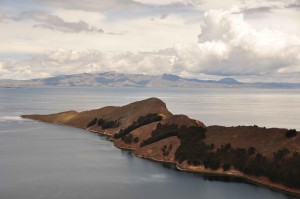
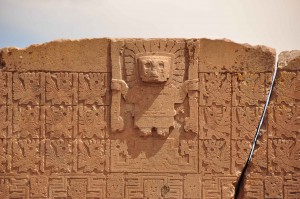

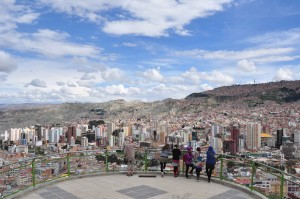


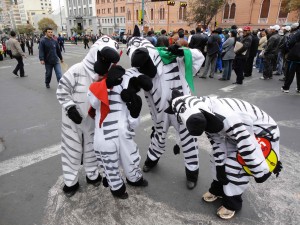
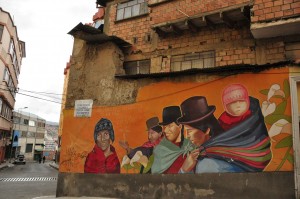
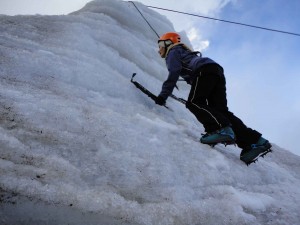
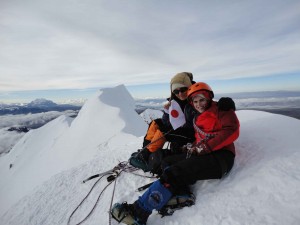
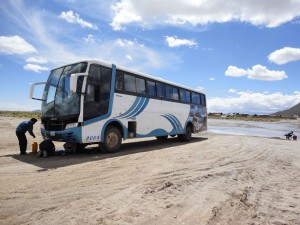
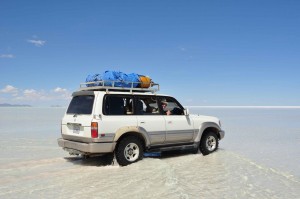
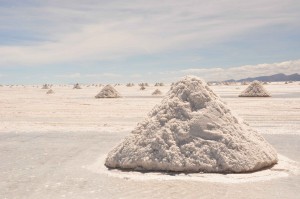
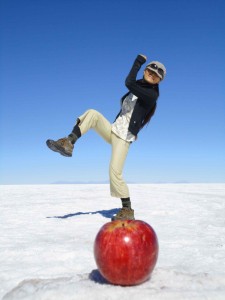

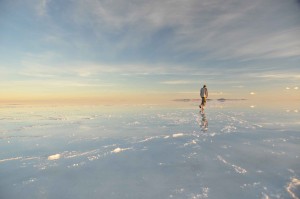
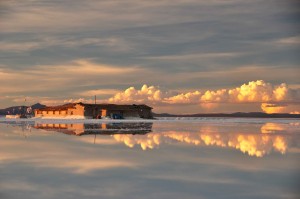
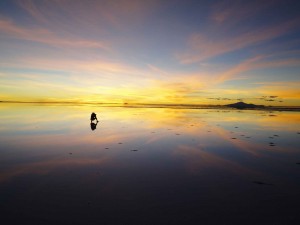
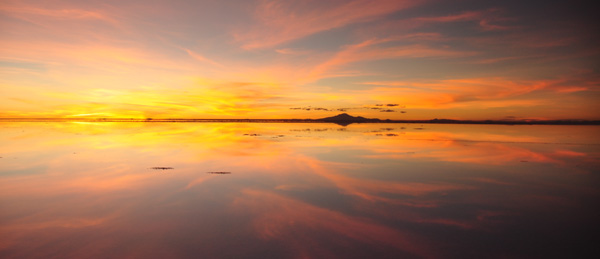

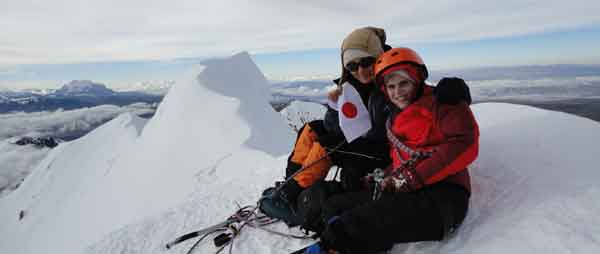
![Connecting with the Sacred Incan Legacies I wasn’t expecting much from the Incan sites to be honest, while I wanted to do Macchu Picchu, I hadn’t really given the Incan’s too […]](http://meltingplots.com/wp-content/uploads/2011/04/Machu3.jpg)

